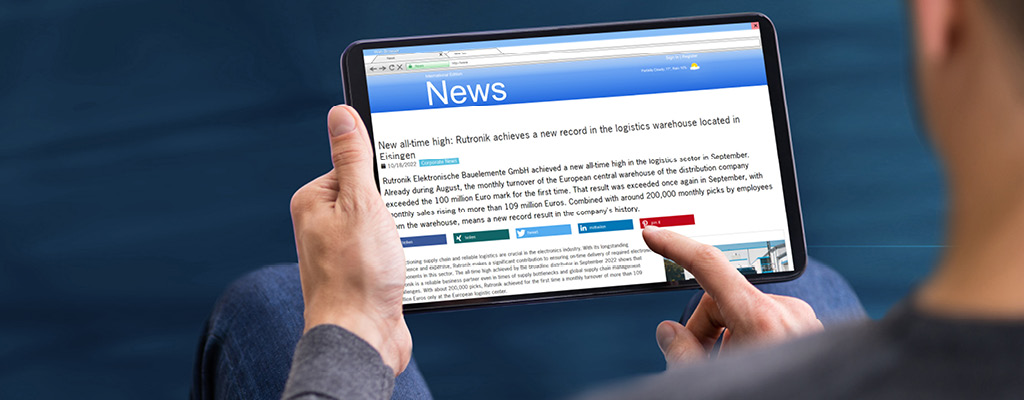The number of smart home applications and connected devices is growing rapidly – which is not surprising as they make everyday life more convenient. Statista estimates that there are already around 350 million smart homes worldwide – and the number continues to rise. The downside is high energy consumption. This is because many of the devices are permanently active or in standby mode in order to be ready for use at all times.
Deep sleep instead of standby mode
However, it is often unnecessary for a device to be in standby mode. For example, when residents are not at home, thermostats, smart speakers, and digital assistants could be put into deep sleep mode to reduce energy consumption. The potential savings range from a few watts to more than 100 watts. However, depending on the number of devices and time the amount of time they are in deep sleep, the savings can add up quickly. An example calculation shows: With five smart devices per household, you could save an average of 0.5 kWh per day. For 300 million households, that amounts to a saving of 55 TWh per year.
However, many devices do not have power-saving features such as sleep mode, or users disable them because they are inconvenient to use. This is because deep sleep mode, combined with high application functionality, often results in long startups and waiting times for the user.
Energy efficient thanks to radar technology and IoT sensors
So how can ease of use be combined with intelligence and energy efficiency? The combination of radar technology with IoT sensors opens up new possibilities. For example, a radar sensor integrated into a smart home device can be used to detect the presence of people. If there are no such impulses, the smart device will automatically switch to deep sleep mode. Depending on the sensor and design, the actual radar module consumes only a few milliwatts and has a maximum power consumption level of just 0.1 W, which is well below the energy requirements of the ON or standard standby mode of many electronic devices.
The advantages of radar technology over other sensors (e.g. infrared) can be seen in the example of a ventilation system. It works most efficiently when combined with temperature and CO2 sensors, and the system is only activated when needed – i.e. when someone is present, the CO2 level is too high, or the temperature exceeds the preset limit. Unlike other sensors, the radar detects not only whether people are present but also how many and where they are (at what distance from the sensor). This enables the sensor to optimally adjust the airflow of the air conditioning system.
24 and 60 GHz radars enable a wide range of applications
Infineon Technologies offers a diverse portfolio of radar components for numerous applications. Among other things, the products enable precise motion and presence detection for smart lighting systems, gesture recognition for intuitive human-machine interfaces in smart home devices, contactless acquisition of vital data in health and well-being monitoring systems, and advanced object segmentation and tracking for optimizing industrial processes. The 24 GHz radar family offers high flexibility in system design and covers a wide range of use cases: It can be used to determine motion and direction as well as the velocity, angle of arrival, and position of single and multiple targets. For applications requiring wide bandwidth and higher accuracy, Infineon’s portfolio includes low-cost and compact 60 GHz radars with low power consumption (Fig. 2). In addition to applications such as short-range localization in surveillance, lighting, and smart home devices, the 60 GHz radar sensors are also used for vital data acquisition in consumer electronics, health care scenarios, driver assistance systems, and industrial applications. All 60 GHz IoT radar sensors are size-optimized and come with antennas in the package.
For example, the BGT60TR13C model has one transmitting and three receiving antennas. The L-shaped antenna arrangement allows horizontal and vertical angle measurements. The extremely high accuracy enables motion detection in the sub-millimeter range. The radar sensor is used, for example, for vital data acquisition in consumer electronics. The BGT60LTR11AIP is a 60 GHz Doppler radar sensor with an integrated transmitting and receiving antenna and integrated motion and direction detectors. It supports multiple modes of operation, including a fully autonomous mode that requires no software or hardware design. In autonomous mode, the radar can detect a human at a distance of up to seven meters, consuming less than 5 mW. This makes the radar sensor ideal for motion detection, such as in smart lighting or climate control, automatic door opening or contactless switches, and smart security and alarm systems, including IP cameras. The BGT60UTR11AIP is the latest member of the BGT60 family and, at just 4.05 mm × 4.05 mm, is the smallest and most compact radar on the market. Designed for demanding applications, it features the sensitivity and reliability of frequency-modulated continuous-wave radar technology. Infineon supports development through development kits for embedded and PC-based evaluation, including comprehensive software development kits (SDKs) and examples for algorithm development, prototyping, and embedded implementation.
For more information and a direct ordering option, please visit our e-commerce platform at www.rutronik24.com.
Subscribe to our newsletter and stay updated.


